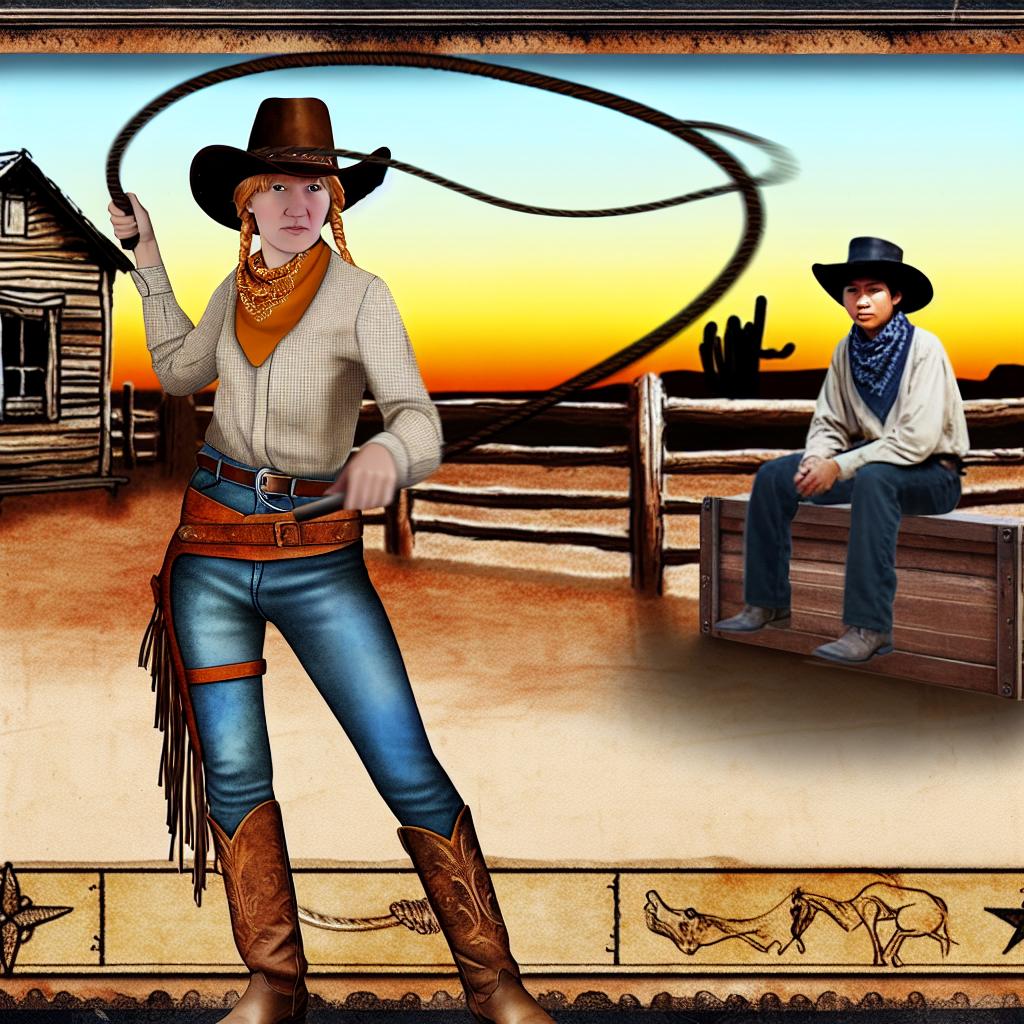
How bullwhips were used by cowboys.
Introduction to the Bullwhip
The bullwhip, deeply intertwined with the lore of the American West and cowboy tradition, was initially created as a tool for herding livestock. In its essence, the bullwhip is a pragmatic instrument, emblematic of cowboy prowess and expertise. The characteristic cracking sound, which signifies mastery over the whip, serves as an effective means for managing animals while also highlighting the skill of the person wielding it.
Construction and Design
The quintessential bullwhip is meticulously crafted, often by hand, from woven pieces of leather. These leather pieces generally come from rawhide or kangaroo hide, materials chosen for their durability and flexibility. The length of a bullwhip can vary greatly, typically ranging from six to twelve feet, although longer custom versions do exist for specific needs.
A traditional bullwhip comprises several key components: the handle, the lash, which forms the main body, and the fall, a brief extension connecting to the end of the lash. At the very tip is the cracker, or popper, a replaceable piece made of woven leather. This section is crucial for creating the renowned sharp sound that is synonymous with the whip’s function.
The design and construction of the bullwhip require a keen understanding of material properties and a delicate balance between flexibility and strength. For instance, the weave must be tight enough to withstand immense forces but remain supple to allow fluid motion. Often, the expertise of craftsmen who produce these whips is passed down over generations, ensuring the quality remains consistent with tradition.
Usage by Cowboys
In everyday activities, cowboys employed bullwhips primarily for driving and managing cattle across expansive landscapes. The whip’s crack was sufficient to startle but not harm the animals, thereby guiding them more efficiently over great distances. This method of using acoustic stimuli was pivotal in managing large herds, especially during cattle drives where control and precision were paramount.
Cowboys, recognized for their unique abilities to employ bullwhips effectively, could steer animals with surprising exactitude. The sharp sound acted as a non-verbal command that herds became accustomed to over time. Beyond herding, the bullwhip found utility in varied scenarios: it helped clear brush to make paths accessible and deter potential predators. The sound echoing like a gunshot was sometimes the only line of defense against wildlife and also served as a signal to fellow cowboys, conveying messages over considerable distances.
The Technique and Skill
To wield a bullwhip is an art form that demands considerable skill, extensive practice, and a thorough grasp of timing and fluid motion. Correctly swinging the whip to produce the intended crack entails precise control, ensuring the safety of both the user and the animals.
Techniques like the overhand crack or the flick are prevalent maneuvers that cowboys often practiced. These techniques utilize the whip’s inherent physics, revisiting principles of momentum and speed conversion into sound energy. Mastering the bullwhip calls for an acute understanding of these principles, showcasing an expertise that commands respect.
For many, respect for the bullwhip’s power is equally as important as technical skill. A poorly executed whip crack can backfire, endangering the user or failing to achieve the intended purpose. Cowboys practiced diligently to perfect their craft, often taking young apprentices under their wings to pass on the necessary knowledge and physical understanding.
Cultural Significance
Alongside its functional applications, the bullwhip has ascended to a position of profound symbolic importance in cowboy culture and the imagery of the American West at large. Often depicted in films and literature, it stands as a symbol of rugged individualism and specialized skill. The bullwhip represents the quintessential cowboy: resilient, self-reliant, and proficient in mastering a craft that few can claim expertise over.
In modern times, the cultural reverberations of the bullwhip extend beyond the traditional cowboy community. It has become a symbol absorbed into various aspects of pop culture, appearing in cinema and as a metaphor for control and precision. The mystique surrounding the bullwhip continues to attract enthusiasts dedicated to preserving, learning, and sharing the skill associated with this instrument.
For those with an inclination toward exploring the cowboy tradition and their tools more profoundly, information and narratives detailing these experiences are available. Websites such as Cowboy Tales offer deeper insights into the cultural impacts of this iconic tool, revealing its broader significance in contemporary storytelling and tradition.
Conclusion
The bullwhip persists as a monument to the resourcefulness and traditions of cowboys. It embodies both the utilitarian aspects required for survival in past eras and the artistry involved in mastering such a tool. As a historical artifact, the bullwhip brings forth a narrative bridging past and present, where cowboys managed vast herds across open ranges with immense skill. Its legacy, richly interwoven with American history, remains celebrated and recognized for encapsulating a pivotal period of Western expansion and lifestyle.